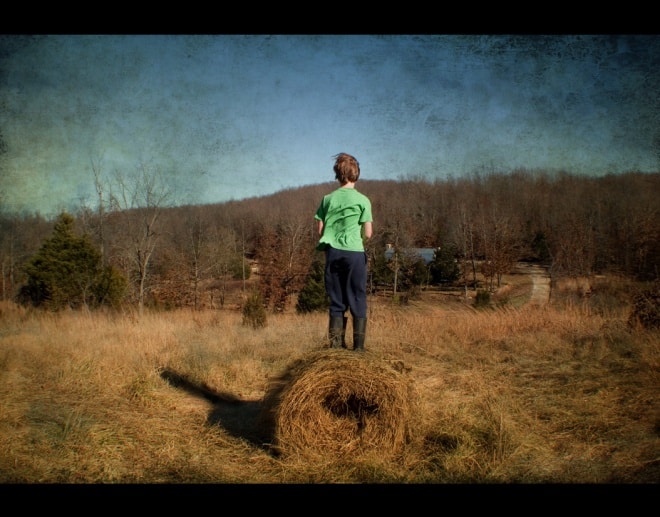Variety is the Spice of Homeschool

I remember when I started homeschooling in high school. A friend suggested a curriculum and, being new to homeschooling, my mom just did it. My schedule was very routine. Each weekday, I did Math, English, Social Studies, Science, and French; in that order, too. It was SO boring. It was a self-taught curriculum with very little teacher interaction.
I was an excellent student and loved school, but even I quickly lost interest. Gradually, my mom began to realize that same truth about life also rings true in homeschooling:
Variety is the spice of homeschool life.
Within the first semester, she decided to branch out into the unknown and let me take a photography class. Of course, I loved it and I thrived. Each day, I would get up and diligently finish my core subjects so that I could spend all afternoon on photography. Soon after, I also began a Sign Language course that I loved, too.
My mom understood another truth: We are not preparing our kids for a job; we are preparing them for life. Although photography did eventually become my job, that is not the reason she encouraged me to take the course in school. She knew it was my passion. How did she know this? She watched me, talked to me and was brave enough to forge her own way and try something new by giving us variety.
Give children a wide range of subjects - Charlotte Mason
The reason kids get bored is that you have not hit upon their passion. This is why Charlotte Mason suggested giving children a wide range of subjects. You never know what your child might like unless they are introduced to it. One child will like sports and another will like music. You cannot always know what they will like just my talking; sometimes, they just have to try it out.
Another reason to keep variety in your homeschool is that it helps keep kids well-rounded and interested in school because it breaks up the routine.

What Does Variety Look Like?
Variety in homeschool can look crazy. There are so many options. Whatever you or your child can come up with, can be taught; if not by you, then by someone. If my kids want to learn something that I can’t teach, like karate, I let them take classes somewhere or find a friend who knows how to teach it. My kids do several subjects each week. Here is a list of classes we do in a five-day period: math, grammar, creative writing, spelling nature study, reading to yourself, family read alouds, world history, chemistry, art, music, habit training, Bible, animal study, sports, and geography.
Throughout any year we also do swimming lessons, skateboarding lessons, computer lessons, and Spanish.
Now, if you are accustomed to doing the same subjects every day, this list will look impossible. It would be impossible to get it done every day. So how do you expose your kids to variety in homeschool? Well, let me show you how we do it.
There are four key elements to incorporating variety in your homeschool.
#1 Rotate subjects
There are a few subjects that we do every day like math, grammar, science, history, spelling and habit training. The other subjects are rotated. Sometimes we get to geography just once a week. Sometimes we do it several times a week. We might do animal study or nature study only a handful of times each month. When we find that a subject doesn’t interest the kids, we change it out for a new one for a while. We might come back to that one later, and try again when they are older.
#2 Combine Subjects
Often, it is easy to combine several subjects into one to save time. Last year we read a book called The Cave Boy. Several of our subjects were covered in this one ten-minute reading each day: history, geography, read alouds, grammar, animal study and creative writing.
The kids would write about what we read and then correct it. Through this process, we learned grammar rules. We looked on the map to find the area described in the book and learned about what it looked like and what animals were there, too. There was really no need to cover creative writing and animal study if we already did them that week.
#3 Short Lessons
Possibly the most important of the four key elements to getting some variety in your homeschool is short lessons. We can’t spend an hour each on math and history and expect to be able to fit in art that day, too. The actual lesson time averages fifteen minutes for each subject. I would rather my children do two perfect sentences than a page of sloppy work. I would rather them do five perfect problems in math than a page full of ones that they “kind of get the concept.” We focus on quality over quantity and complete focus over repetition. That is how you do short lessons.

#4 Afternoons are for “Fun” Subjects
While the kids enjoy most all of our learning time, there are subjects that they particularly enjoy over the others. We do our every day subjects before lunch so that our afternoons are spent doing things the kids enjoy and can hardly even call schoolwork. This is the time they get in reading, art, music and the subjects like that. We go on nature walks and do sports.
This is the time you can get really creative. Introduce your child to new classes on a regular basis because you never know when they will love one and, in the words of my four-year-old, “Bam, it’s perfect.”
As you can see, it is not hard to get variety in your homeschool week. It’s not only a great way to find your child’s passion, but it is an excellent way to banish school time boredom and get your kids looking forward to education every day.







Leave a Reply